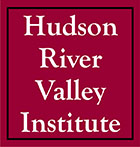 Ensembles
Ensembles
The United States Military Academy Band is based at the United States Military Academy in West Point, New York. During the Revolutionary War, West Point was a detachment of the Continental Army, the 1st Connecticut Brigade under the command of General Samuel Holden Parsons, established a military post at West Point after crossing the Hudson River on the eastern side. This brigade had with it a fifer and a drummer and with these two musicians began the history of music at West Point. In 1802 President Thomas Jefferson signed an order creating the US Military Academy at West Point. As the academy grew there came a need to help drill the cadets. A new ensemble of fifes, bugles, and drums was assembled and in 1817 they were named the "West Point Band." The band was growing and new instruments were being added to the ensemble. In 1866 the ensemble became officially known as the United States Military Academy Band. The band today is comprised of four different groups The band itself, the Hellcats, which is the field music unit, the Jazz Knights, and the band's support staff. The band performs numerous concerts every year both at West Point and abroad.
The Hudson Valley Philharmonic was formed when a group of Poughkeepsie businessmen setup a small string ensemble in 1932. At first this ensemble was called the Dutchess County Philharmonic Orchestra. The orchestra began to grow in popularity and in 1934 the group began to do public concerts. As the group became more popular it began to attract musicians from area schools as well as other amateur musicians from around the region. By the 1940s the ensemble had grown to more than 90 members and their performances largely centered on classical works and works by local composers. In 1998 the orchestra was presented with a financial crisis that presented a huge problem for the group. To prevent bankruptcy, several foundations endowed the group and the Bardavon Opera House who now manages the orchestra bought the assets of the group.
The Marist College Band was formed by Arthur Himmelberger in 1986 to perform at the Marist basketball games. Since then the group has grown in numbers to more than 110 students. The department has also seen the addition of numerous small ensembles including a brass ensemble, percussion ensemble, woodwind ensemble, jazz ensemble, hand bell choir, flute choir, and guitar ensemble. These groups do numerous performances every year but the busiest ensemble is the pep band. The pep band is made up of all members of the Marist College band and performs at all home basketball and football games.
The Musical Ensembles at SUNY New Paltz encompass a wide variety of musical groups and repertoire. SUNY New Paltz has a number of instrumental and chorale ensembles that perform everything from small chamber works to contemporary pieces for larger ensembles.
The Musical Ensembles at Bard College include a number of both choral and instrumental groups. These ensembles include everything from small string quartets to sizeable band and choral ensembles that perform several concerts each year on the campus of or the surrounding area of Bard College.
The Musical Ensembles at Vassar College consist of a number of different groups. The Vassar College Orchestra is the primary musical ensemble of the college and they put on numerous performances throughout the year.
The Musical Ensembles of SUNY Purchase consist of numerous ensembles dedicated to performing a variety of works for everything from small ensemble pieces to large works performed by the college's bands and choirs.
The Musical Ensembles of Nyack College range in size from small chamber ensembles to larger musical ensembles. These ensembles perform a wide variety of music and put on several concerts every year.
The Musical Ensembles of Marymount College of Fordham University consist of numerous ensembles that perform a variety of music at several concerts each year.
© William Salluzo, Marist College.





